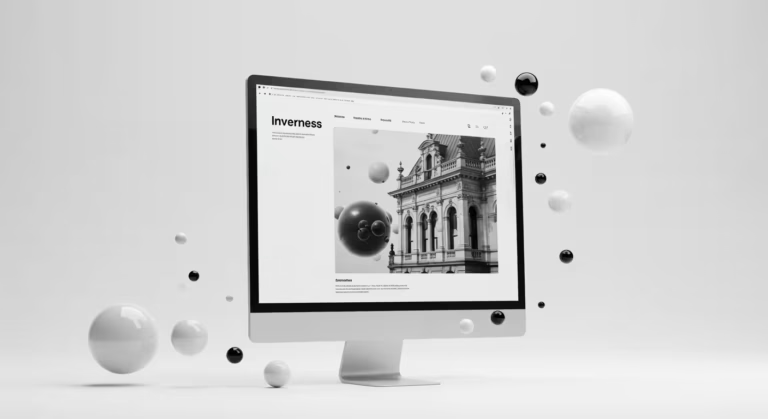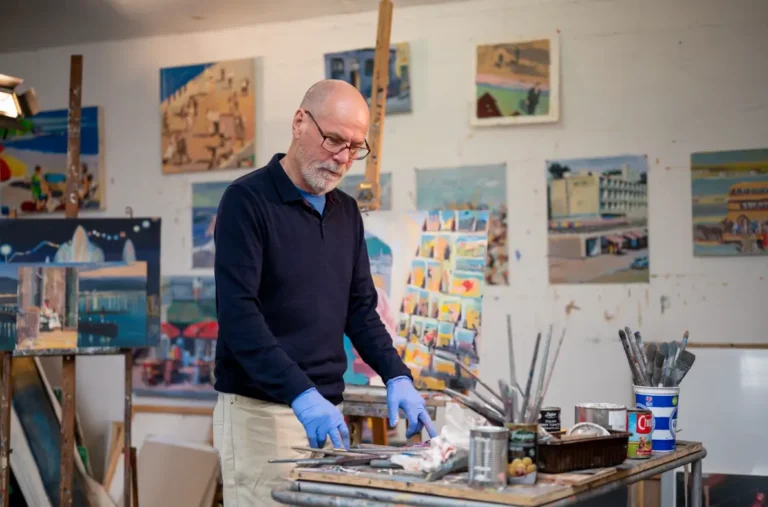Glasgow’s creative scene is entering 2026 with remarkable momentum, blending deep cultural heritage with forward-thinking design and architecture.
The city’s reputation for contemporary arts is being strengthened by its active festivals, open calls for innovative projects like the Glasgow International 2026 biennial, and a vibrant mix of galleries and studios in neighbourhoods such as Merchant City and Finnieston.
These initiatives are driving a wave of fresh talent into the city from all across the UK and Europe, solidifying Glasgow’s position as a truly global hub for creativity.
For up-to-date details on the city’s creative opportunities and events, the official festival programme offers an excellent overview: Glasgow International 2026.
Simultaneously, the city’s ever-evolving skyline provides a physical manifestation of Glasgow’s creative ambition.
Recent design policies, including the council’s Tall Buildings Design Guidance, are unlocking new heights—literally and figuratively—for architecture, encouraging major new constructions and mixed-use developments across Anderston Quay, Trongate, and Charing Cross.
This forward-looking approach, shaped by consultation with architects and the public, marks a shift away from limitations of past decades, setting out the vision for Glasgow to compete with leading European cities.
For more on how Glasgow’s skyline and design standards are changing for 2026 and beyond, view the policy’s highlights at Glasgow Chamber of Commerce – Tall Buildings.

Architectural Evolution and a Changing Skyline
Glasgow’s skyline has seen a dramatic transformation, evolving from a landscape dominated by Victorian architecture and industrial history into a city identified by its modern, innovative design.
Recent years have witnessed the rise of ambitious projects like the Buchanan Wharf development, which sets a high standard for urban regeneration by integrating sleek glass towers and energy-efficient structures.
The growth of the riverside tech and media district further underscores Glasgow’s shift towards sustainable, internationally competitive architecture, positioning the city as a creative rival to global centres such as London and Amsterdam.
Central to this progression are local firms including Keppie Design, whose work blends advanced energy-saving technologies with bold contemporary aesthetics, influencing major new builds across Glasgow.
At the same time, the city celebrates its heritage by reframing icons like the Finnieston Crane as symbols of enduring creativity, integrating them into a horizon populated with innovative new landmarks.
This synergy of past and future gives Glasgow’s skyline a distinctive identity—one that honours its historic roots while enthusiastically embracing architectural ambition.
The Enduring Influence of the Glasgow School of Art
The Glasgow School of Art continues to embody the heart of Glasgow’s creative identity, despite facing significant hurdles in recent years.
Its alumni—spanning graphic design, product innovation, and digital artistry—actively shape the city’s legacy as one of Europe’s most esteemed centres for design.
The school remains at the forefront of educational innovation, weaving artificial intelligence, sustainability, and socially engaged design into its curriculum.
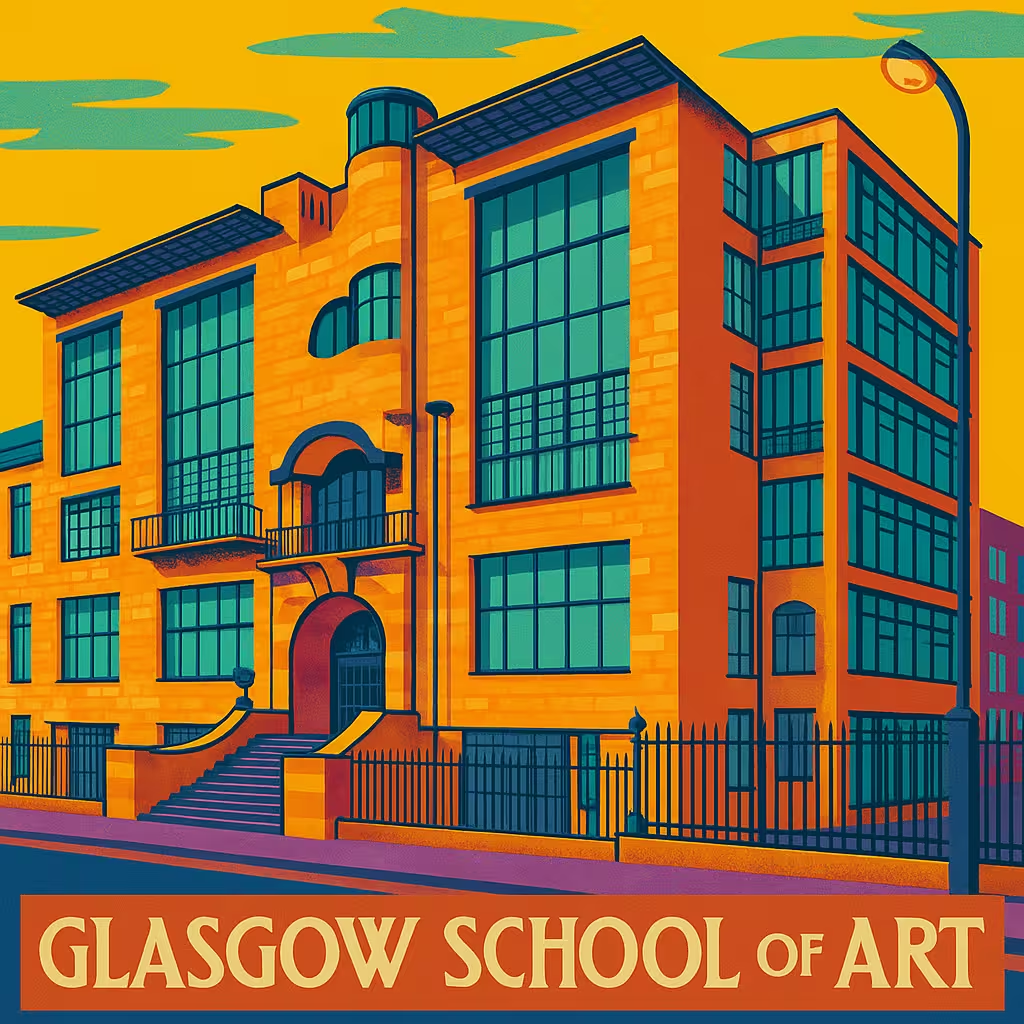
Through new partnerships with local agencies, GSA is enabling creative experimentation and nurturing a dynamic new generation of designers propelled to shape the city’s and continent’s visual language over the coming decade.
Glasgow’s creative growth gains further validation with a recent industry-academic partnership joining forces between the Glasgow School of Art, University of Glasgow, and City of Glasgow College.
This landmark collaboration seeks to establish Glasgow as the UK’s “3D content creation capital,” promising new avenues for animation, gaming, and new media design, while reinforcing the city’s status as a leading creative force across Europe.
As these initiatives take root, Glasgow’s reputation as an influential design powerhouse continues to rise, fuelled by inventive education and dynamic cross-industry projects.
Murals, Walls, and Stories: Glasgow’s Street Art Revolution
Walking through Glasgow is like exploring an open-air gallery, thanks to the city’s vibrant street art scene. The Glasgow Mural Trail invites residents and visitors alike to experience sprawling murals that cover gable ends, bridge underpasses, and building walls across the city.
Glasgow’s mural trail features five unmissable street art works created by some of the city’s most celebrated artists.
St Mungo
St Mungo by Smug, located on High Street, is one of Glasgow’s most iconic murals—a hyper-realistic tribute to the city’s patron saint that weaves local history into striking contemporary art. Smug, whose real name is Sam Bates, completed this mural in February 2016 on the side of a tenement at the heart of the city.
The artwork depicts St Mungo holding a robin, a reference to one of his miracles involving the revival of St Serf’s pet robin—a story that forms part of the city’s celebrated coat of arms.

Smug’s intent was to humanise the saint by portraying him as an everyday Glaswegian, bringing the values of kindness and resilience into the present and making the legend feel more accessible to all. This article from the Culture Map provides a comprehensive review overview of the iconic street art piece.
Smug is an internationally renowned street artist, originally from Australia but now Glasgow-based, acclaimed for his photo-realistic, freehand murals created primarily with aerosol paint.
Explore more of Smug’s latest work, creativity, and mural projects on his Instagram profile (@smugone).
St Enoch and Child
St Enoch and Child, painted by Smug and located at the corner of High Street and George Street, offers a beautifully intimate depiction of the city’s founding story.
The mural shows St Enoch (also known as Thenue) nursing her baby, St Mungo, Glasgow’s patron saint—a striking image that speaks to maternal care, resilience, and new beginnings.
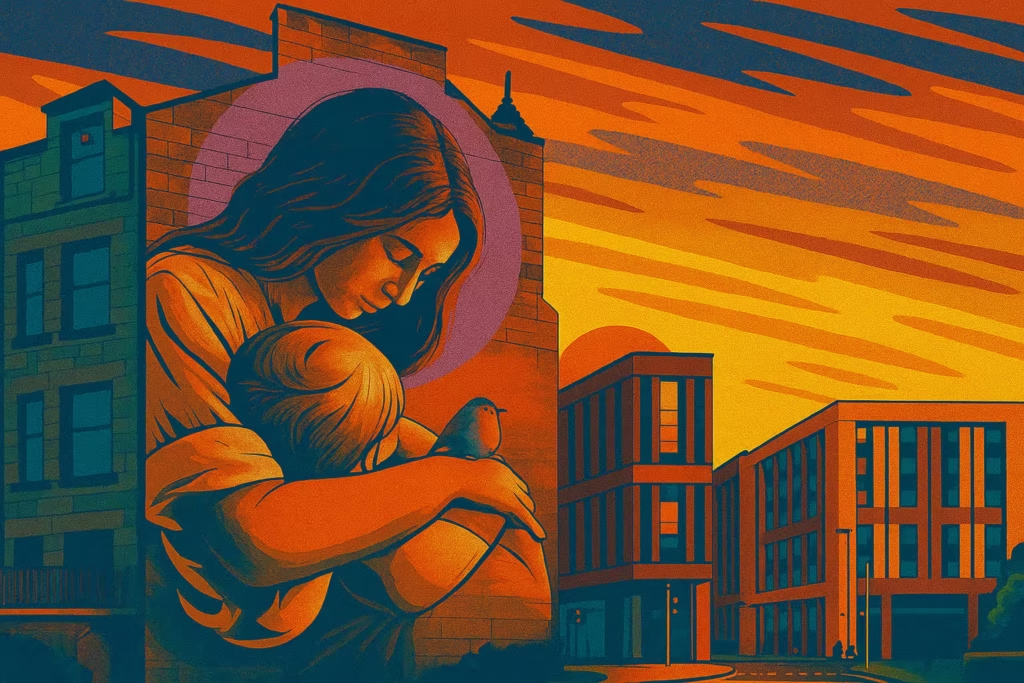
Crafted with Smug’s trademark hyperrealistic style, this piece not only honours the city’s origins but also connects past and present through its warmth and tenderness.
This contemporary interpretation draws viewers into the narrative roots of Glasgow, while motifs like the robin (also featured in Smug’s St Mungo mural) further symbolise hope and renewal.
Honey I Shrunk The Kids
Honey I Shrunk The Kids, another standout mural by Smug, adorns the gable end of a building on Mitchell Street, just off Argyle Street.
This colossal piece playfully features a young woman with a magnifying glass, painted with such hyperrealism that she appears to pick up tiny pedestrians from the street below.

Spanning four storeys, the mural delights locals and visitors alike, blending Smug’s deep realism with a childlike sense of wonder—offering the perfect opportunity for creative perspective photography and imaginative engagement with Glasgow’s urban space.
Like his other masterpieces, this mural emphasises Smug’s technical prowess and whimsical vision, making it a true icon on the Glasgow Mural Trail.
Choose Earth
Choose Earth by Rogue-One is a striking mural on Cresswell Lane that elevates Glasgow’s commitment to global sustainability. The artwork features a hyperrealistic astronaut cradling planet Earth, set against a vibrant cosmic backdrop.
Commissioned in the run-up to COP26, this mural engages passers-by with its message of environmental stewardship, reminding viewers of their shared responsibility to care for the planet.
Rogue-One, known for his meticulous technique and powerful themes, expertly infuses the city’s streets with bold storytelling and contemporary relevance.
You can read more about Rogue One on this Street Art Utopia article.
This mural is one of several pieces in Glasgow where art confronts urgent, real-world issues through large-scale public displays. For more on Rogue-One’s creative journey and his most recent mural projects, explore his Instagram (@rogueoner).
Strath Wonder Wall
Strath Wonder Wall is a monumental collaborative mural by Rogue-One and Ejek, stretching nearly 200 metres along the Graham Hills building at Strathclyde University on George Street.
This enormous artwork, completed with Art Pistol, weaves together vibrant portraits, city icons, academic achievements, and scenes from everyday campus life, celebrating the diversity and dynamic energy of Glasgow’s population.
The project incorporates imaginative references, from telescopes and ships to student activities, and represents one of the UK’s biggest outdoor murals, instantly recognisable for its bold colours and engaging storytelling.
Rogue-One is renowned for his detailed freehand aerosol technique, while Ejek brings a distinctive, colourful touch to every piece. Together, their combined creative vision makes this mural a true visual landmark in Glasgow’s city centre.
For Ejek’s latest works and mural updates, follow Instagram (@ejekart).theholmestead
You can see some more examples from Rogue Art on the Homesteads comprehensive glasgow street art page: https://theholmestead.com/the-artists/rogue-one.
These works make every stroll through Glasgow’s city centre uniquely memorable and are a testament to the artists whose creativity transform urban landscapes into living narratives for all to enjoy.
The mural maps and guides available help enthusiasts navigate the city’s street art hotspots, making it an immersive way to engage with Glasgow’s evolving creative landscape.
For a comprehensive guide to exploring the murals on foot, including practical tips and detailed routes, the festival-focused platform Festivation offers excellent resources: Your Ultimate Glasgow Street Art Guide for 2025.
Up-and-Coming Agencies Shaping the City’s Creative Identity
Emerging design agencies in Glasgow are reshaping the city’s creative reputation, seamlessly blending digital innovation with bold storytelling.
Studios like Waracle, The Inverness Design Studio, ISO Design, and MadeBrave headline a new era of multidisciplinary talent, having earned recognition for their work with local and global brands.
MadeBrave in particular has rapidly grown over the last decade, producing award-winning campaigns for giants like Nestle, Google, and BBC, and setting new standards in branding and digital media throughout the UK.
Alongside larger studios, Glasgow’s startup ecosystem is enabling smaller agencies and collaborations to thrive.

Support from initiatives like Techscaler, the Glasgow City Innovation District, and Scottish Enterprise is helping foster creative entrepreneurship, making it easier for local talent to work internationally and export their creativity as confidently as whisky or music.
The city’s creative community is increasingly connected to Europe and beyond, transforming Glasgow into a global destination for design-led thinking.
A standout recent project includes the Glasgow 2026 Commonwealth Games branding, developed by Loop Design Agency. The campaign celebrates the city’s riverside regeneration and industrial heritage through contemporary design and bold visual storytelling, further cementing Glasgow’s creative credentials.

Glasgow’s Media City and the New Wave of Creative Jobs
Glasgow’s Media City, evolving along the banks of the Clyde, is having a transformative effect on the region’s creative job market and its broader economy.
This rapidly expanding district is now home to leading broadcasters, animation studios, and tech startups, serving as a magnet for digital talent across diverse creative fields.
The demand for roles like UX designer, motion graphics artist, 3D visualiser, and content strategist is on the rise, driven by new infrastructure investments and major regeneration projects supported by the Glasgow City Region City Deal.
This initiative is fuelling not just physical redevelopment but also business innovation, directly creating thousands of jobs and fostering growth for local and international companies alike Glasgow City Region City Deal overview.
Glasgow’s creative ecosystem now rivals established UK and European hubs such as Manchester’s MediaCityUK and the design districts of Berlin. The city’s convergence of film, design, and emerging technology is generating hybrid creative roles that barely existed a few years ago, keeping its workforce on the cutting edge.
With tens of thousands already employed in creative industries and more jobs on the horizon, Glasgow is solidifying its reputation as a city where innovation drives both cultural and economic success BBC: Glasgow city transformation.
The Startup Scene: Creativity Meets Entrepreneurship
Glasgow’s creative startup environment is buzzing. Affordable workspaces like The Whisky Bond and SWG3 provide studios for designers, musicians, and developers to collaborate under one roof.
The local government’s support for innovation through tax reliefs and grants has attracted international entrepreneurs looking for a European base.
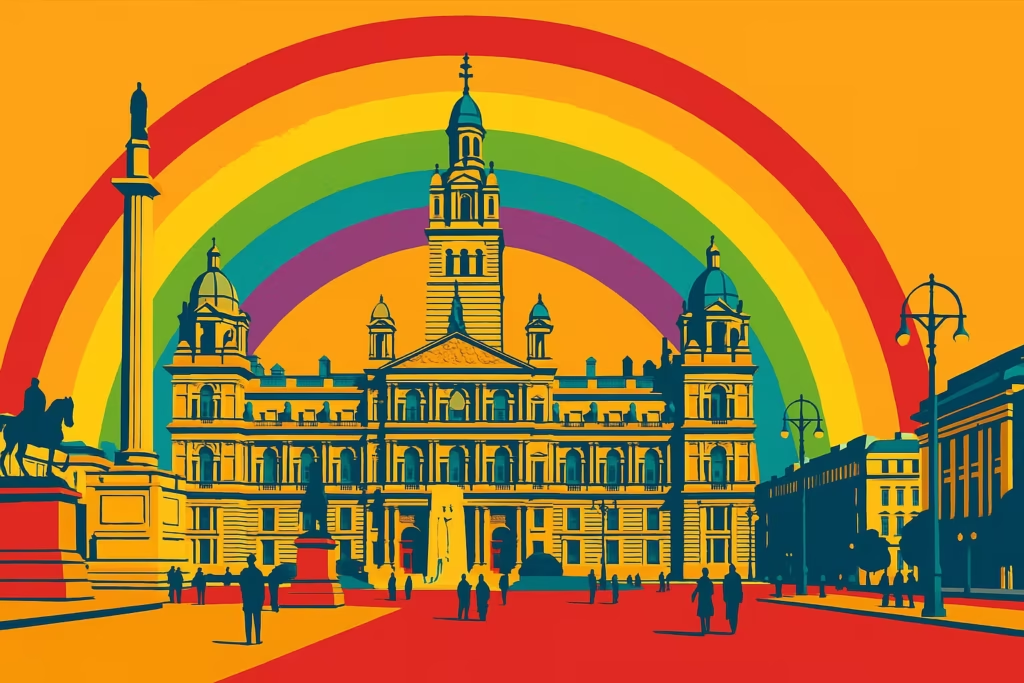
Compared to London, Glasgow offers lower living costs and a tight-knit creative community that values collaboration over competition.
Against European counterparts like Copenhagen or Amsterdam, Glasgow distinguishes itself with grit and warmth—a city that balances artistic ambition with practical opportunity.
Snapshot: Glasgow’s Design Scene in Numbers
| Sector | Growth (2024–2026) | Notable Projects | Emerging Trend |
|---|---|---|---|
| Graphic Design | +15% | MadeBrave Rebrand Campaign | AI-assisted branding |
| Architecture | +22% | Buchanan Wharf Development | Net-zero design |
| New Media | +18% | Media City Expansion | Virtual production |
| Street Art | +12% | City Centre Mural Trail | Cultural tourism |
| Startups | +25% | Techscaler Creative Hubs | Hybrid creative spaces |
5 Must-Visit Creative Spaces in Glasgow
- SWG3 – A creative compound mixing design, art, and events.
- The Lighthouse – Scotland’s Centre for Design and Architecture, offering exhibitions and skyline views.
- The Whisky Bond – A collaborative hub for artists, designers, and digital entrepreneurs.
- The Hidden Lane – A bohemian maze of studios and workshops in Finnieston.
- Wasps Studios – Affordable spaces for visual artists and makers across the city.
FAQs
What makes Glasgow such a unique city in the creative industries?
Glasgow’s reputation as a creative powerhouse is built on a rare combination of cultural heritage, affordability, and ceaseless innovation, making it a magnet for emerging and established talent.
The city offers a thriving network of affordable studios, co-working spaces and high-impact startup hubs, from the Glasgow City Innovation District to leading creative policy initiatives charted in the Culture Strategy for 2024–2030.
These ingredients foster a vibrant ecosystem where creative agencies, freelancers, and international brands regularly collaborate, exporting Glasgow’s creative output far beyond Scotland’s borders.

Data from Invest Glasgow confirms the city is Scotland’s largest creative tech hub, supporting more than 34,000 jobs and generating over £1 billion in turnover annually.
Opportunities in animation, design, film, music and digital advertising are amplified by connections to universities and major public investment, as explained in the Creative Scotland Annual Plan.
These factors combine to position Glasgow as an accessible, collaborative and globally influential destination for creative work—one where tradition meets ambition and new ideas have room to flourish.
Is Glasgow a good place for design graduates?
Glasgow is an excellent city for design graduates, offering a rich environment that supports creative growth and career development.
The presence of renowned institutions like the Glasgow School of Art provides students with cutting-edge education and strong industry connections, nurturing talent with a curriculum that embraces innovation, sustainability, and emerging technologies.
Graduates benefit from access to vibrant creative hubs such as the Glasgow City Innovation District, which hosts a range of studios, agencies, and startups fostering collaboration and practical experience.
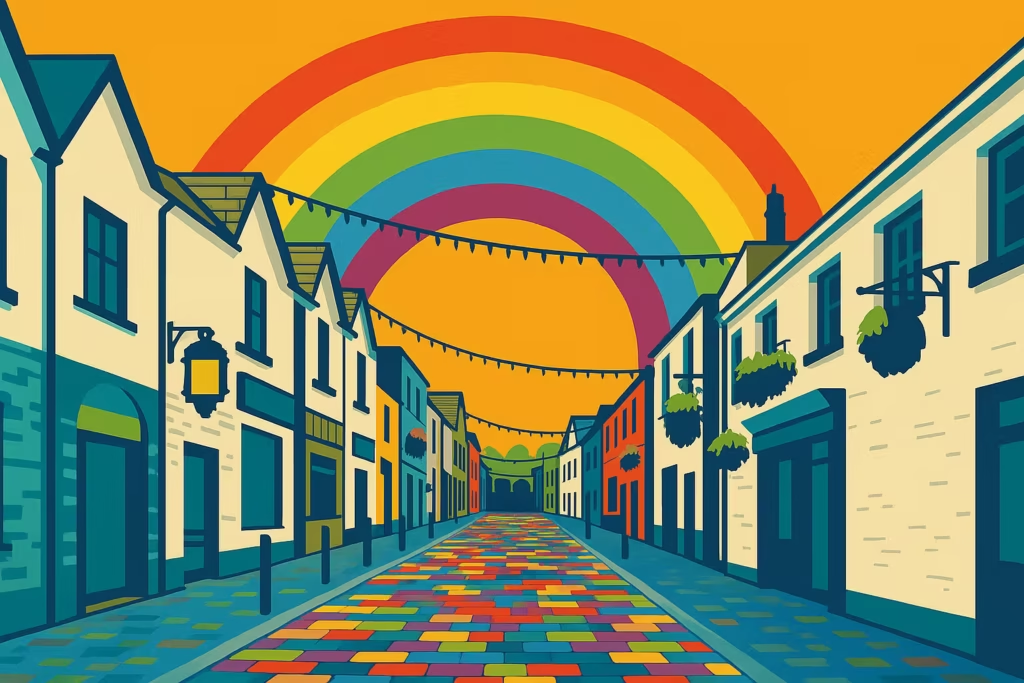
Moreover, Glasgow’s creative sector is thriving, with a steady demand for design professionals across multiple disciplines—from digital design and animation to branding and UX/UI.
The city’s affordability combined with active support from organisations like Creative Scotland and vibrant co-working spaces ensures that emerging designers can find opportunities to launch their careers, work alongside established agencies, or even develop their own enterprises.
This dynamic ecosystem makes Glasgow a highly attractive destination for design graduates seeking a stimulating and supportive environment.
Which design disciplines are growing fastest?
The fastest growing design disciplines in Glasgow reflect the city’s forward-thinking approach and technological integration.
Architecture continues to flourish, combining Glasgow’s rich heritage with innovative sustainable practices, notably at the Mackintosh School of Architecture renowned for visionary urban and environmental design.
Digital design, including UX/UI, motion graphics, and digital animation, is rapidly expanding as creative studios incorporate cutting-edge tools and immersive media into their workflows.
This growth is supported by new educational pathways like Glasgow Clyde College’s HND Graphic Design and Emerging Technologies, blending traditional techniques with digital innovation.

Emerging fields such as 3D content creation and new media are also booming.
A recent partnership between the Glasgow School of Art, University of Glasgow, and City of Glasgow College positions Glasgow as the UK’s “3D content creation capital,” fostering careers in animation, gaming, visualization, and interactive experiences.
This interdisciplinary focus is creating hybrid roles and expanding opportunities across design, film, and technology, keeping Glasgow at the cutting edge of creative industries in the UK.
What role does the Glasgow School of Art play today?
The Glasgow School of Art (GSA) remains a powerhouse for creative education, continuing to nurture designers who influence global industries.
As one of Europe’s leading art institutions, it offers practice-led teaching across Fine Art, Design, Architecture, and Innovation & Technology, attracting a diverse international community of over 3,500 students and staff.
The school’s 2025 Degree Show, one of the largest public visual arts exhibitions in Glasgow, exemplifies its role in pushing boundaries through projects addressing contemporary challenges like artificial intelligence, sustainability, and social issues.
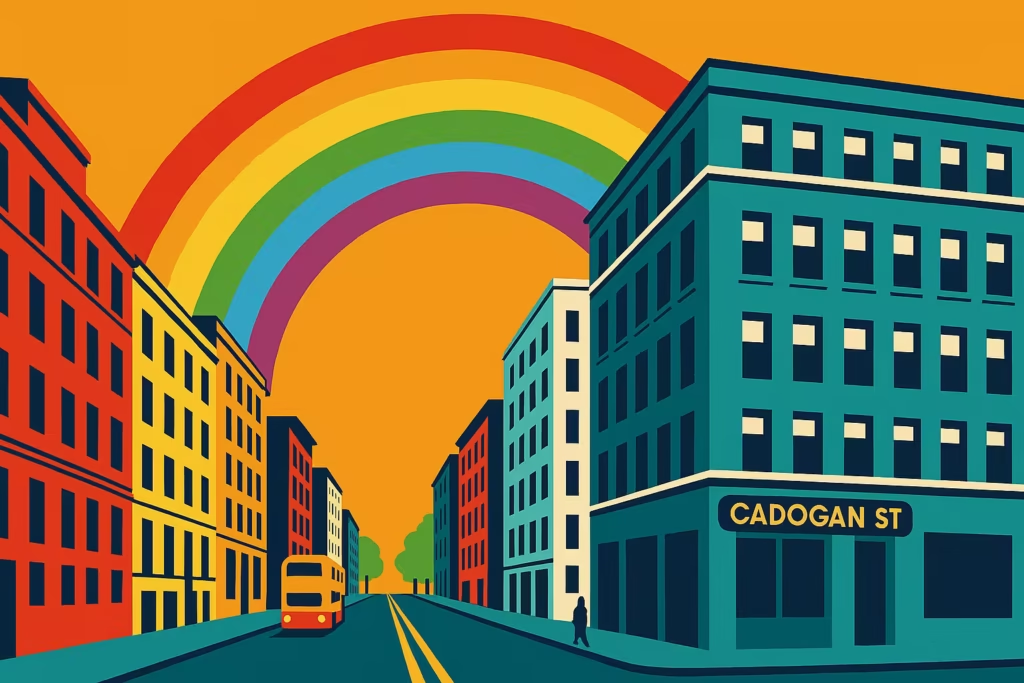
This event also highlights the strong connection between the school and the city’s creative supercluster, where many graduates stay to contribute to Glasgow’s growing creative economy GSA Degree Show 2025.
Despite challenges including the complex restoration of the Charles Rennie Mackintosh-designed Mackintosh Building—the school’s historic home damaged by fire—GSA is committed to faithfully reinstating this architectural masterpiece to remain a vibrant, working art school at the heart of Glasgow’s cultural ecosystem.
This commitment, alongside ongoing advances in digital and physical art education, ensures that GSA continues to be a beacon of creative innovation, producing designers who shape cultural and commercial sectors worldwide GSA Mackintosh Building update.
How does Glasgow compare to London or Manchester?
Glasgow uniquely blends the ambitious scale and international outlook of London with the strong community ethos and creative energy often associated with Manchester, all at a considerably more affordable cost.
While London remains a global hub for design and media with vast opportunities and networks, its high living and operational expenses can be prohibitive for emerging creatives and startups.
By contrast, Glasgow offers a supportive ecosystem with accessible workspaces, dynamic cultural investment, and a collaborative atmosphere that nurtures both innovation and grassroots community connection, much like Manchester’s thriving creative sectors.
Furthermore, Glasgow’s rising reputation in areas like digital media, 3D content creation, and sustainable architecture is positioning it alongside these larger cities as a serious competitor in creative industries.
The city’s strategic partnerships between institutions like the Glasgow School of Art, local government, and business accelerators ensure that talent development and industry growth go hand in hand.
This blend of ambition, community, and affordability gives Glasgow a distinctive edge and makes it an attractive alternative for creatives seeking both opportunity and quality of life.

